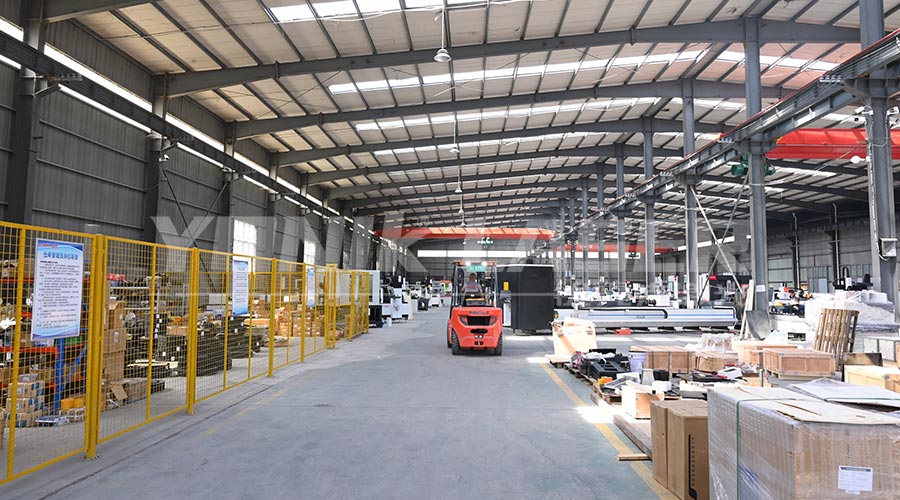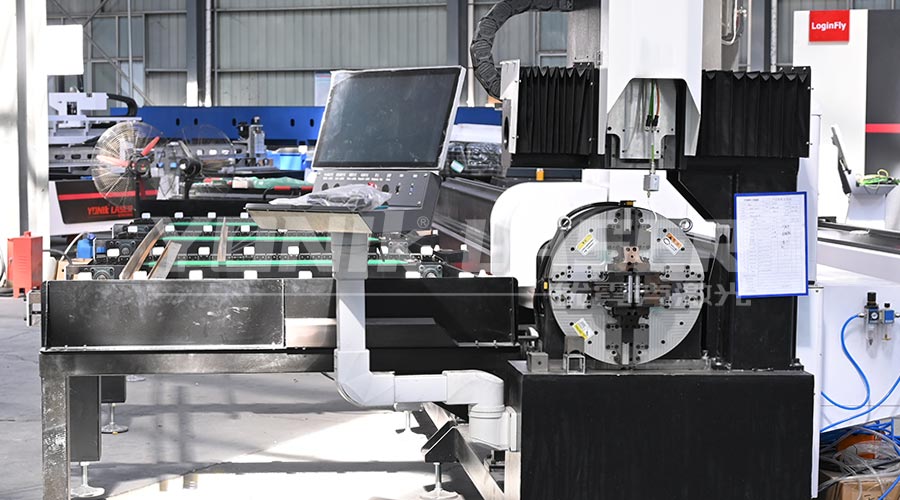In today's world, where laser cutting technology is widely applied in aerospace, automotive manufacturing, precision machinery, and other fields, thermal deformation has emerged as a core challenge restricting processing accuracy and efficiency. When a high-energy laser beam melts metal at millisecond speeds, the local temperature can soar to thousands of degrees Celsius. The stress concentration caused by thermal expansion and contraction in the material can lead to minor issues like workpiece warping or severe problems such as cutting path deviations and even equipment damage. This article will systematically analyze the formation mechanisms and solutions of thermal deformation during laser cutting from three dimensions: technical principles, control strategies, and industry case studies.

I. Root Causes of Thermal Deformation: The Conflict Between Energy Input and Material Response
The essence of laser cutting is the interaction between high-density energy and materials. For example, when cutting 3mm stainless steel, a laser beam with a power density exceeding 10⁶ W/cm² can raise the local temperature above the melting point within 0.1 seconds, forming a molten pool. At this point, factors such as the injection speed of the assist gas (e.g., oxygen or nitrogen), the material's thermal conductivity, and the cutting speed jointly determine the size of the heat-affected zone (HAZ).
Key conflict points include:
Uneven energy input: The laser spot diameter typically ranges from 0.1–0.4mm, resulting in highly concentrated energy that causes localized overheating. In contrast, the surrounding material experiences a temperature gradient due to delayed heat conduction.
Differences in material thermophysical properties: For instance, aluminum alloy has a thermal conductivity three times that of carbon steel but a lower melting point (660°C vs. 1538°C), making it prone to residual stress from rapid cooling.
Equipment structural limitations: Traditional single-column machine tools may experience vertical axis displacement due to thermal expansion after heating, leading to cutting path errors.
II. Thermal Deformation Control Technologies: From Passive Compensation to Active Prevention
1. Precise Temperature Field Regulation: Breaking the Vicious Cycle of "Heat Source-Deformation"
Forced cooling and temperature balancing technologies serve as foundational solutions. For example, installing water-cooling circulation systems at heat-generating components (e.g., laser generators and guide rails) on machine tools can compress temperature fluctuation ranges to within ±1°C by controlling flow rates. Practical tests by a German machine tool manufacturer show that a dual-loop cooling structure reduces spindle thermal drift from 0.15mm/h to 0.03mm/h during eight hours of continuous cutting.
More advanced solutions involve active temperature compensation for specific zones. By embedding heating modules in low-temperature areas of the machine tool and combining them with infrared thermometers for real-time feedback, heating power can be dynamically adjusted to improve overall temperature field uniformity by 80%. A domestic laser enterprise applying this technology reduced edge warping from 2mm to 0.3mm when cutting 20mm carbon steel.
2. Structural Optimization: Weakening Thermal Deformation Propagation at the Source
Machine tool structural design must adhere to the principle of "low heat capacity, high rigidity." For example, replacing traditional single-column structures with dual-column symmetric designs reduces vertical spindle displacement due to heating by 70% while minimizing transverse deformation. Additionally, shortening the distance between the spindle center and the ground (e.g., from 1.2m to 0.8m) lowers the impact of thermal expansion on processing diameter. Tests by an aerospace component manufacturer demonstrate that this modification reduces circular hole processing concentricity errors from 0.15mm to 0.05mm.
Heat source isolation technologies are equally critical. Externalizing high-heat-generating components such as laser generators and power supplies into independent cooling chambers reduces internal heat accumulation in the main machine. A modular design by a Japanese manufacturer lowered the internal temperature of the main machine by 12°C compared to traditional models, increasing cutting speed by 15% while reducing equipment failure rates by 40%.
3. Intelligent Optimization of Process Parameters: Enabling Adaptive Cutting Processes
Dynamic focus control represents a core technological breakthrough. When cutting 10mm stainless steel, traditional fixed-focus cutting causes excessive vaporization in the upper material layers and molten material accumulation in the lower layers, triggering thermal stress concentration. Segmented focusing technology—positioning the focal point 0.5mm below the material surface during piercing for enhanced energy density and raising it to 1.5mm during cutting to expand the molten pool—can increase cutting speed by 20% while optimizing surface roughness from Ra6.3μm to Ra3.2μm.
Gas coordination strategies also play a crucial role. When cutting carbon steel, oxygen pressure must be dynamically adjusted based on thickness: 1.2MPa high-pressure oxygen rapidly removes slag during 3mm plate cutting, while 0.8MPa low-pressure oxygen stabilizes the molten pool during 10mm plate cutting. Practical tests by an automotive mold manufacturer show that this strategy reduces dross adhesion rates from 15% to below 3% for thick plate cutting.
III. Industry Application Cases: Practical "Textbooks" for Thermal Deformation Control
Case 1: Aerospace Sector—Titanium Alloy Thin-Wall Component Cutting
An aerospace enterprise faced severe thermal deformation issues when cutting 0.8mm titanium alloy thin-wall components: post-cutting warping reached 5mm, rendering direct assembly impossible. By implementing the following technological combination:
Ultra-low-power pulsed cutting: Reducing average power from 1000W to 600W while increasing peak power to 3000W enabled "short-term high-temperature vaporization + rapid cooling," minimizing heat accumulation.
Micro-connection technology: Retaining 0.1mm uncut regions every 50mm along the cutting path leveraged the material's inherent rigidity to suppress deformation.
Vacuum adsorption fixtures: Negative pressure secured the workpiece tightly against the cutting platform, eliminating vibration interference during cutting.
Ultimately, workpiece warping was controlled within 0.5mm, and the pass rate improved from 65% to 92%.
Case 2: New Energy Vehicle Battery Tray Cutting
A new energy vehicle manufacturer's battery tray (6mm aluminum alloy, dimensions 2000mm×1200mm) cutting project initially used traditional fiber laser cutting machines, resulting in a 30% out-of-tolerance rate for joint gaps due to thermal deformation. After switching to a high-power disk laser + dynamic water-cooling system:
The disk laser's beam quality (M²<1.1) surpassed traditional fiber lasers (M²≈2.5), improving energy concentration by 40% and reducing the heat-affected zone to 0.3mm.
The water-cooling system adjusted flow rates in real time based on cutting paths, intensifying cooling during long straight-line cuts and controlling overall tray temperature fluctuations within ±3°C.
Consequently, the joint gap pass rate rose to 98%, and single-piece processing time decreased by 25%.
IV. Future Trends: Thermal Deformation Control Enters the "Intelligent Era"
With the integration of Industry 4.0 and AI technologies, thermal deformation control is shifting from "experience-driven" to "data-driven" approaches. For example:
Digital twin technology: Building virtual models of machine tools, materials, and processes enables real-time prediction of thermal deformation trends and automatic parameter adjustments. Tests by a German manufacturer demonstrate that this technology achieves cutting path compensation accuracy at the 0.01mm level.
Machine vision closed-loop control: High-speed cameras installed on cutting heads monitor molten pool morphology and workpiece deformation in real time, with AI algorithms dynamically correcting laser power and cutting speed. Experiments by a domestic enterprise show that this system reduces verticality errors in thick plate cutting from 1° to below 0.3°.

Conclusion: Thermal Deformation Control—The "Last Mile" Breakthrough in Laser Cutting
In high-end manufacturing, a 0.1mm precision difference can determine product success or failure. Thermal deformation control represents not just a technical challenge but a key competitive advantage for enterprises. From temperature field regulation to structural optimization and from intelligent process parameter optimization to AI empowerment, the laser cutting industry is transforming this persistent issue into a differentiator through continuous innovation. For equipment manufacturers and end-users alike, mastering thermal deformation control technologies unlocks the "golden key" to high-precision manufacturing.
2025-07-22
2025-07-21
2025-07-19